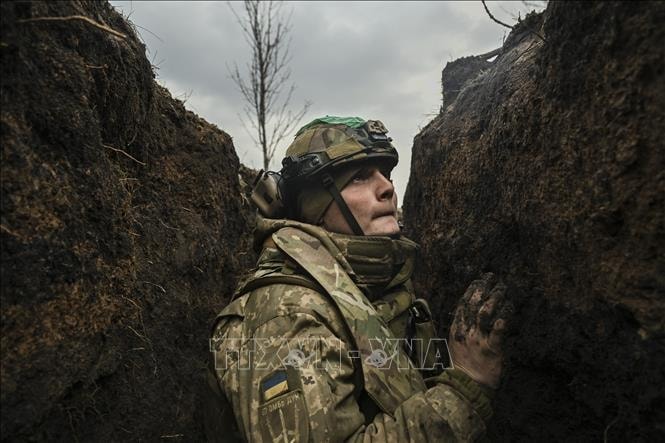Ukraine has seen a particular increase in antibiotic resistance during its conflict with Russia.

When he was taken to a hospital in Dnipro, southeastern Ukraine, for treatment, the wound on Sushko's left leg was infected with antibiotic-resistant bacteria, causing difficulties for doctors.
Thousands of other soldiers, like Sushko, are returning from the front lines with wounds festering with drug-resistant bacteria. This is a terrifying little-known danger of the Russia-Ukraine conflict.
Bacteria have long developed resistance to the drugs designed to fight them, rendering many drugs ineffective. According to the World Health Organization (WHO), antibiotic-resistant bacteria have directly caused more than one million deaths and contributed to five million deaths each year globally.
This situation is rapidly increasing due to the inappropriate or excessive use of antibiotics to treat humans, animals and food, which is also happening in Ukraine.
But Ukraine has seen a particular increase in antibiotic resistance during the conflict with Russia. “The fundamental reason why we see increased antibiotic resistance is really because of the ongoing war,” said Jarno Habicht, WHO representative in Ukraine.
Direct confrontation and airstrikes have led to a surge in military casualties, overwhelming Ukraine's already understaffed hospitals.
The Dnipro Mechnikov hospital, where Sushko is being treated, has had to deal with a tenfold increase in workload. “Every explosion is an open wound, and every open wound is an area of infection,” said Sergiy Kosulnykov, a surgeon at Dnipro Mechnikov. Wounds on the battlefield are rarely treated in time, as rescuing wounded servicemen from the front lines, which are being stalked by drones, has become increasingly dangerous.
By the time medical teams can treat service members, wounds are often infected, ulcerated, filled with necrotic tissue and bone, and teeming with dangerous bacteria, Dr. Kosulnykov explained. To save lives, doctors often have no choice but to prescribe powerful antibiotics. And they often don’t have time to wait for test results to determine the appropriate antibiotic.
“The more we try to kill bacteria, the more they defend themselves,” Dr. Kosulnykov concluded. This fact has led doctors to use increasingly strong antibiotics to save patients.
There are cases that are particularly puzzling to Dr. Kosulnykov. Kosulnykov estimates that about 50 percent of the wounded soldiers he treats develop antibiotic resistance even before they start treatment. And doctors often ask whether they have been hospitalized. But they are all brought straight to the hospital from the battlefield, and that is what confuses the doctors.
Ukraine has long been known for its high rate of antibiotic resistance compared to most other European countries, as until recently antibiotics could be purchased without a prescription.
“We need to do more research into the root causes of antibiotic resistance because the conflict is still ongoing,” Habicht said. Part of that research relies on surveillance, he said, and Ukraine has increased the number of labs monitoring antibiotic resistance to 100, up from just three in 2017.
At the same time, Mr. Habicht emphasized the need to end conflicts and monitor and research to ensure appropriate treatment methods.
Back in Sushko, he was discharged after a few weeks of treatment, with the infection under control.